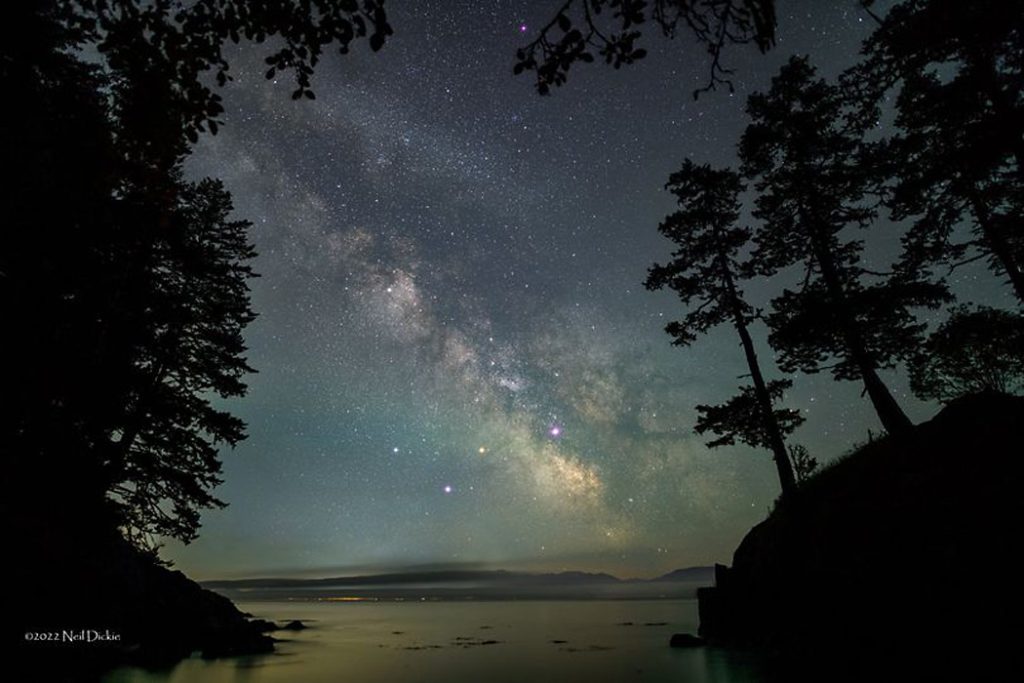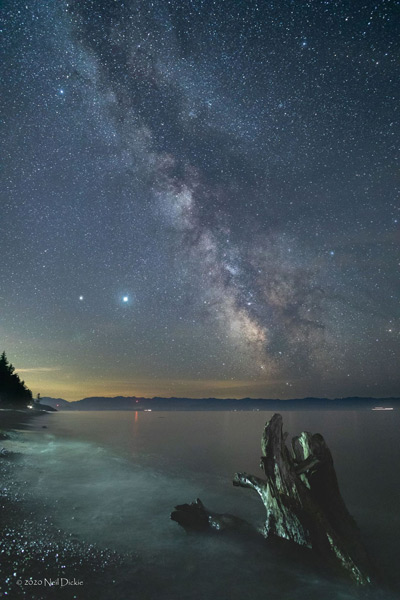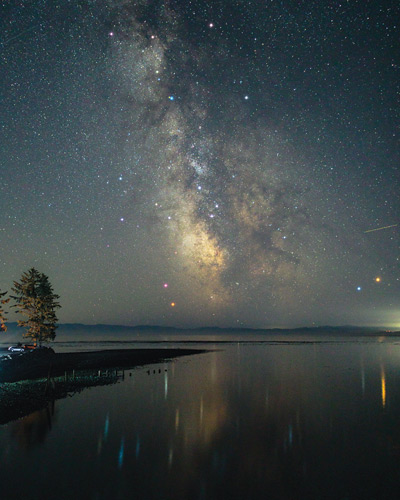
Long summer evenings often encourage people to sit outside and enjoy the stars, but given the increase in light pollution, it’s getting harder to find the Big Dipper and other constellations once the sun sets. A side effect of industrial civilization, “light pollution” refers to a form of waste energy involving unwanted or excessive use of artificial light.
The Oxford English Dictionary describes light pollution as “brightening of the night sky caused by street lights and other man-made sources, which has a disruptive effect on natural cycles and inhibits the observation of stars and planets.” Light emanating upwards from poorly designed lamps and security floodlights causes a phenomenon known as “skyglow.” This surplus light is scattered and reflected by atmospheric particles, blotting out most of the stars, reducing the visibility of the night sky, and making it much more difficult to view celestial objects. This light and the electricity used to create it are wasted, creating higher energy bills and contributing to the overuse of fossil fuels.
Contrary to the popular belief that bright lights make things safer, the glare created from excessive artificial light actually interferes with vision and often makes things less safe.
Light pollution also impacts the circadian rhythms of humans and the animals and insects we share space with, and has other negative environmental impacts. Glare from overly bright or poorly shielded lights interferes with people’s sleep patterns. And the fact that most artificial lighting is now on the blue spectrum aggravates this problem. Blue light wavelengths boost attention and reaction times, which is great during daylight hours, but at night, blue light disrupts the body’s ability to produce melatonin, a hormone that helps us sleep.
Light pollution has an adverse effect on lightning bug populations, as it interferes with their ability to broadcast mating signals. Artificial night lighting also severely reduces the insect population, as insects immolate themselves on the lights, destroying pollinators and valuable food sources for birds and other predators. Homeowners who wish to reduce the number of insects attracted to outdoor lights should use amber-colored bulbs.

Light pollution adversely affects the migratory patterns of birds, as it makes it harder for them to read the stars during nocturnal flights. And light pollution has deadly consequences for the sea turtle population; bright nocturnal lighting confuses newly hatched sea turtles, making it difficult for them to find their way to the sea. Many concerned coastal towns with sea turtle populations have enacted lighting ordinances to keep beaches dark during hatching season.
The International Dark-Sky Association (IDA), a U.S.-based nonprofit founded by professional astronomer David Crawford and physician/amateur astronomer Tim Hunter in 1988, seeks to remedy some of these problems. As stated on their website, the IDA’s mission is “to preserve and protect the nighttime environment and our heritage of dark skies through quality outdoor lighting.” The IDA has many helpful tips and suggestions for combating light pollution. Every April, they host International Dark Sky Week, a weeklong event that helps raise awareness about preserving the natural nighttime environment.

The original dark-sky movement organization, IDA, is currently the largest; in 2011, there were approximately 5,000 members in 70 countries. IDA works to raise awareness through education, while encouraging the protection and restoration of dark skies by providing tips and action points to minimize and combat light pollution.
Additionally, the IDA has also created an International Dark Sky Places conservation program, which promotes excellent stewardship of the night sky. Founded in 2001, this award-winning program encourages communities, parks, and protected areas worldwide “to preserve and protect dark sites through responsible lighting policies and public education,” according to their website. After going through a rigorous certification process—which includes implementing outdoor lighting ordinances and educational programs—cities, parks, reserves, communities, and urban areas are recognized as International Dark Sky Places (IDSP).
Neil Dickie is a freelance photographer-writer-editor living in Victoria, BC. A former resident of Fairfield, he graduated from MIU in 1993.
For information on combating light pollution, visit DarkSky.org.
